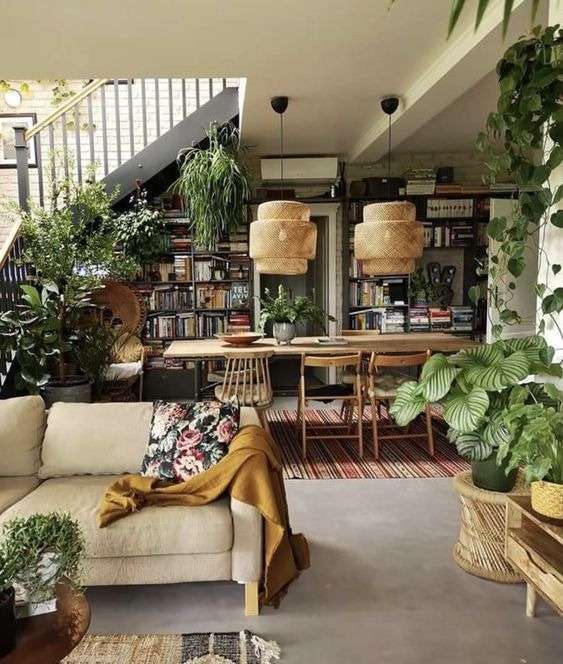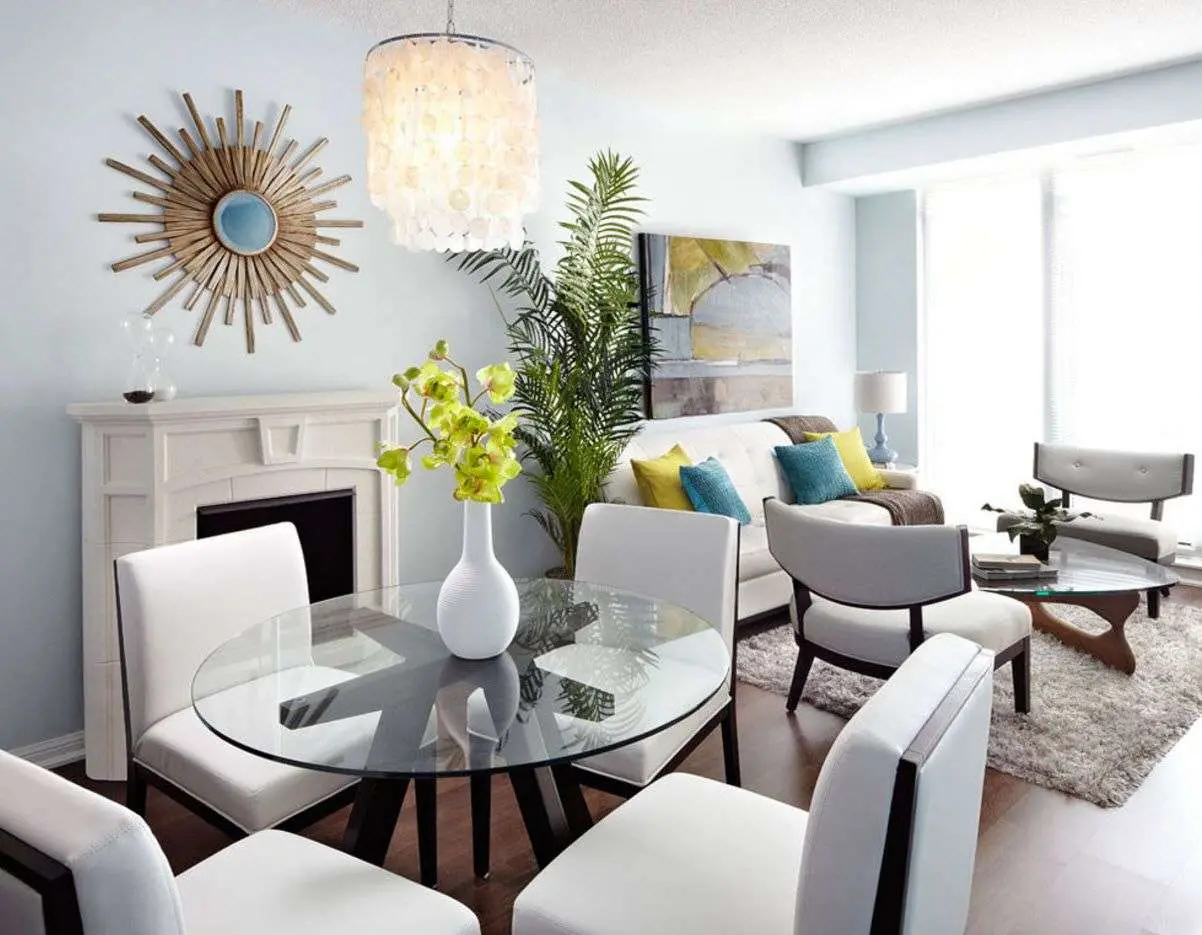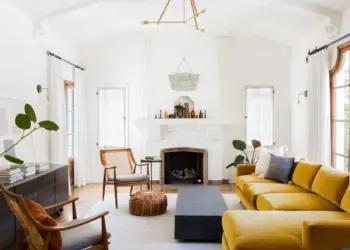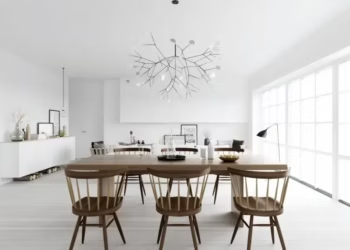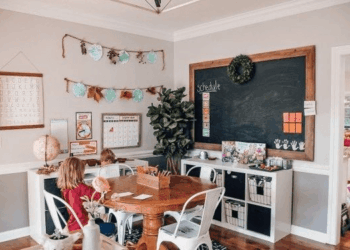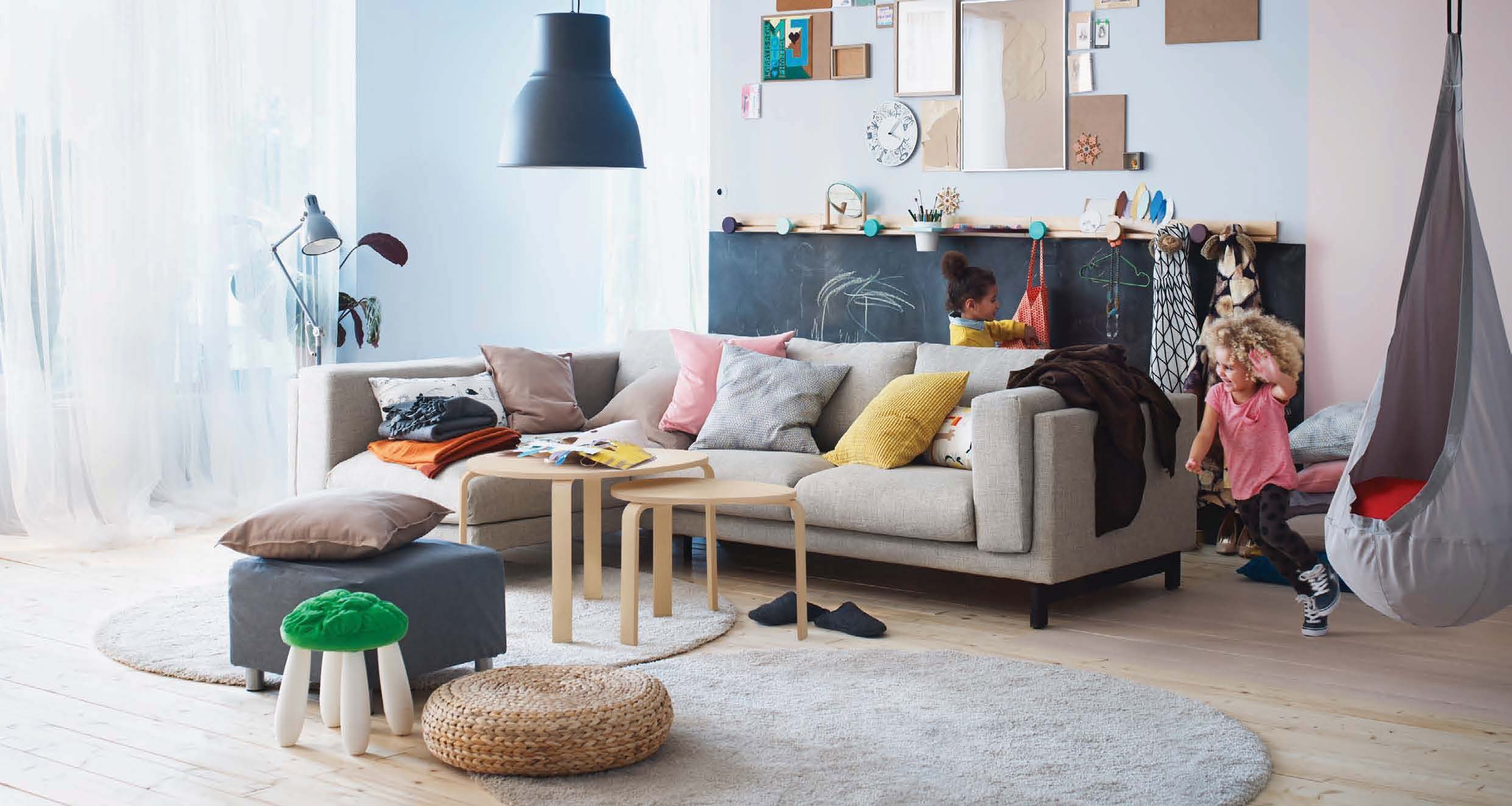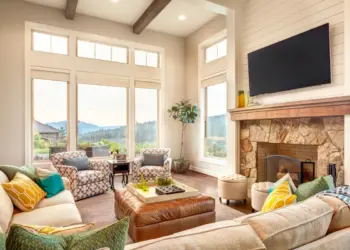Your living room is undoubtedly a real place of conviviality, and thanks to its generous surface area, it frequently combines the living room and dining room in the same space for creating the perfect living-dining room. However, finding the right arrangement in a living room can be quite challenging. So, how exactly do you seamlessly combine relaxation and dining in style? What helpful tips can you utilize to clearly delineate the spaces?
In this article, we are delighted to share our ideas for creating a well-organized, trend-setting living-dining room that exudes both comfort and elegance.
And we’ll explore some tips and ideas for creating a stylish and cohesive living room with dining room setup.
Delineating spaces in the living-dining room
Modern interior design emphasizes open spaces where living rooms, dining rooms, and kitchens merge. Each area retains its unique atmosphere: the living room is for relaxation and reading, while the dining area is dedicated to entertaining guests. Despite visual separation, air and light circulate freely to avoid compartmentalization.
Fluidity and openness create a pleasant, cosy atmosphere. To create an interior that’s a pleasure to live in, you can install a glass roof. This black metal-framed glass gives a touch of industrial style. An attractive light-wood screen is an alternative. For small spaces, think of nibbling square meters by opening the entrance to the small kitchen.
Compartmentalize the space to structure a rectangular living-dining room. Opt for different floor coverings or choose a color for each space to differentiate them. On the other hand, you’ll need to play the unity card in a long room. Finally, choose small-format furniture for a square-shaped room.
The architecture of the house also makes it possible to combine the living room and dining room in a large, open room, thanks to a recess or a simple step that raises the dining table. To separate the living room from the dining room, one solution is storage furniture. Buffets, open bookcases, free-standing shelving units – whatever its function, open, light living-room furniture with clean lines lets the light in.
To personalize your interior decor, choose a graphic design or bold paint scheme. Colors are key in separating spaces. Paint one wall in the living room with a warm or pastel shade for a cozy atmosphere. Furniture, like a corner sofa, creates a sober and comforting living room without closing off the space. Complement it with armchairs, a bench, or a chaise longue to complete the cozy living room setup.
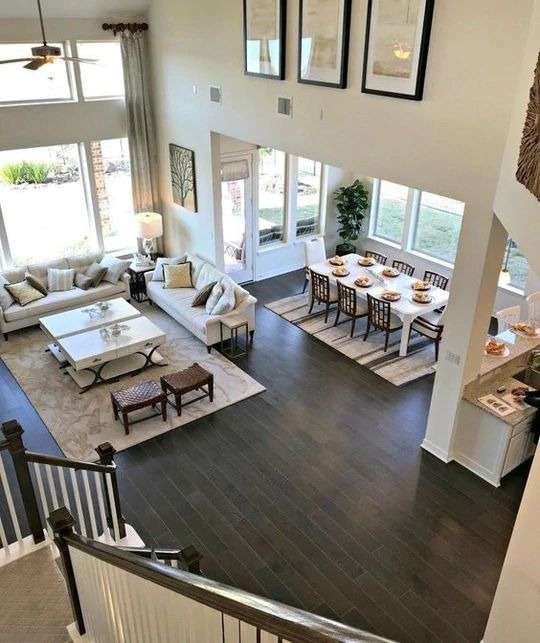
How to Choose Complementary Decor ?
To achieve a cohesive and unified design in the living-dining room;consider selecting similar decor and color schemes for both spaces. Matching furniture designs, coordinating area rugs, and complementary wall art can create a sense of continuity and harmony between the dining and living areas. This approach helps tie the spaces together and creates a visually appealing and well-coordinated living-dining room.
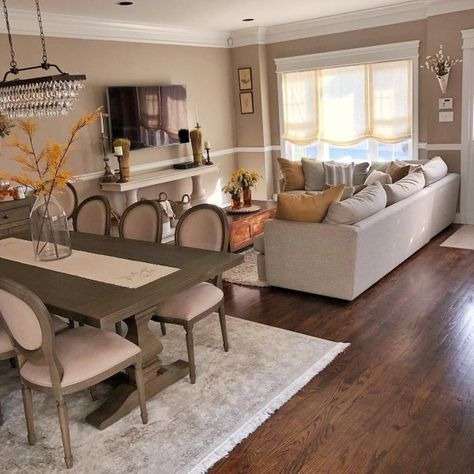
Consider Furniture Placement for your living-dining room
When planning the furniture placement in the living-dining room, aim to maximize the functionality of both spaces. Position the dining table and chairs in the center of the room, allowing easy movement between the eating and living areas. This arrangement creates a seamless transition and makes it convenient for occupants to switch between dining and relaxation.
For the living room area, arrange the furniture in a manner that encourages connection and conversation. Consider creating a seating arrangement that facilitates face-to-face interactions, such as placing sofas and chairs in a circular or L-shaped configuration. This setup fosters a welcoming and sociable atmosphere, making it perfect for gatherings and interactions in the living-dining room.
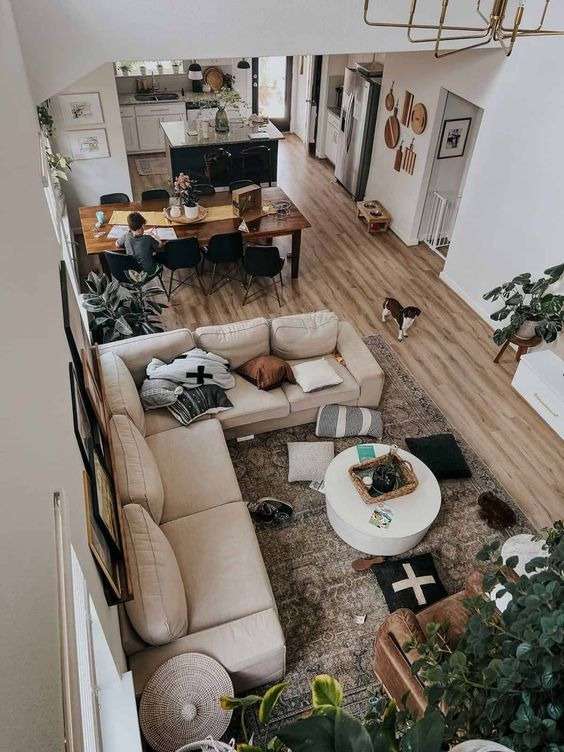
Light Is Important for your living-dining room
Both the dining room and living room necessitate the appropriate lighting to ensure comfort and functionality. Incorporate a variety of lighting options to enhance the ambiance in each space. In the living room, consider adding floor lamps or sconces to provide soft, ambient lighting for relaxation and reading. These lighting fixtures not only illuminate the room but also contribute to its overall decor.
For the dining area, focus on installing pendant lights or a chandelier above the dining table. These overhead lights create a well-lit and inviting atmosphere for meals and gatherings. To add versatility, incorporate dimmer switches for both the living room and dining room lighting. With dimmer switches, you can easily adjust the lighting intensity according to your mood or the specific activities taking place, whether it’s a cozy movie night or an elegant dinner party. The right lighting choices will ensure a comfortable and stylish living-dining room.
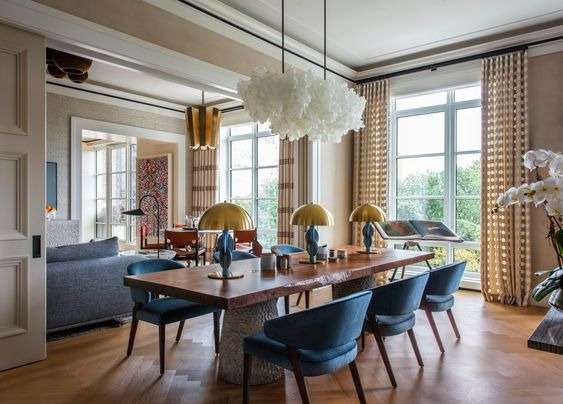
How to arrange the Layout with Balance?
To achieve a balanced and harmonious living-dining room design, incorporate both vertical and horizontal components in your decor arrangement. Utilize the walls in both areas to add height and visual interest through wall decor, such as artwork, shelves, or bookcases. These vertical elements draw the eye upward, making the space feel more dynamic and complete.
To create cohesion and balance, make sure to include both large furniture pieces and smaller accessories throughout the space. In the dining room, the dining table and chairs serve as substantial focal points, while in the living room, the sofa and coffee table play a similar role. Complement these larger pieces with smaller decorative elements like cushions, throw blankets, and decorative objects to add depth and character.
Incorporating a mix of vertical and horizontal elements, along with various sizes of furniture and accessories, will create a visually appealing and well-balanced living-dining room that feels cohesive and inviting.
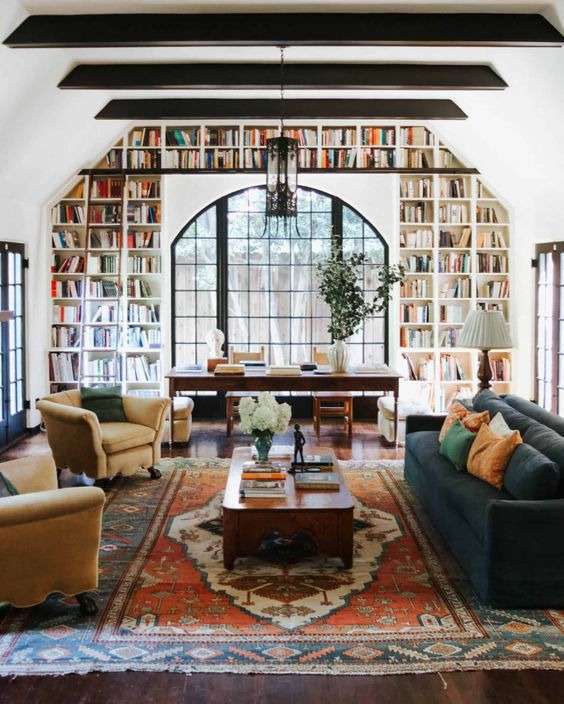
Use Flexible and amzing Furniture
When setting up a living room and dining room, consider using furniture that is multipurpose. For instance, an extensible dining table can easily accommodate bigger parties, while folding or stackable chairs can be conveniently stowed away when not in use. These versatile furniture choices allow you to maximize space and adapt the layout according to your needs, making your living-dining room more functional and adaptable for different occasions.
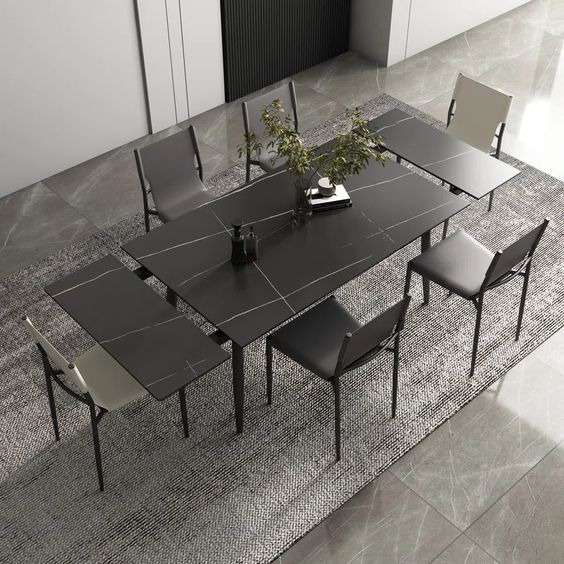
Flooring Resilience
To ensure a smooth transition, maintain consistent flooring between the dining room and living room spaces. Using the same type of flooring or complementary materials will visually connect the rooms and give the impression that they are all part of one cohesive space. This seamless flooring approach enhances the flow and continuity in your living-dining room, making it feel harmonious and well-integrated.
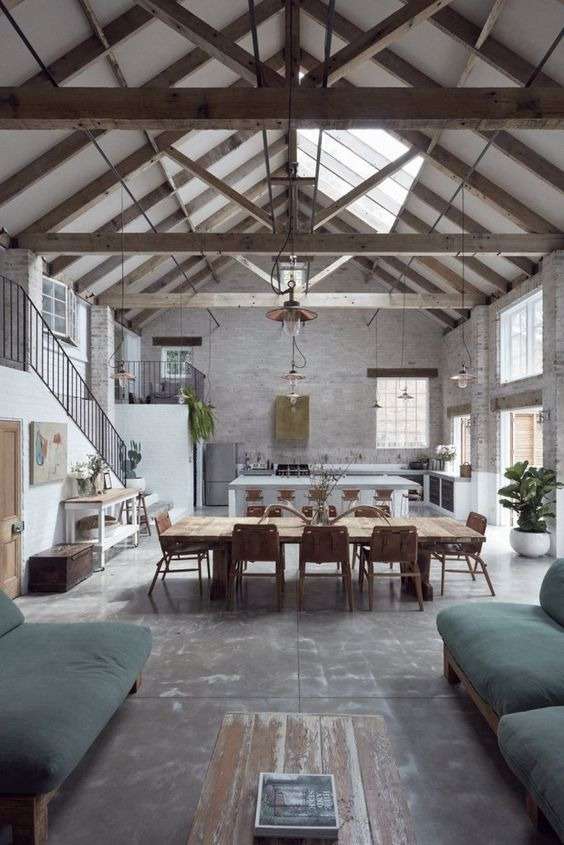
Including natural elements and greenery
To infuse the combined living and dining area with a sense of freshness and liveliness, incorporate plants and natural accents. By incorporating natural materials in design elements, houseplants, and floral arrangements, you can bring a touch of the outdoors inside. These natural elements add a refreshing and vibrant ambiance to the living-dining space, creating a welcoming and inviting atmosphere for both relaxation and dining.
